Abstract
1. Visual sensitivity to movement in depth was measured as a function of the relative distances through which the left and right retinal images moved. This relative distance (left:right ratio) provides a sensitive cue to the direction along which a target moves in three-dimensional space.
2. Gazing at a target which moved along a fixed direction in space produced a gross reduction of visual sensitivity to movements in depth along that direction. For other directions of movement, visual sensitivity was not affected.
3. Sensitivity to depth movement rapidly rose almost to the preadaptation level within the first 20-60 sec after removing the adapting target, but recovery was not complete until 100-300 min had elapsed.
4. Any adapting target whose left:right ratio fell within a definite range gave similar reductions of visual sensitivity to movements in depth. There were five such ranges.
5. The effects of adapting to movement in depth suggest that eight mechanisms underlie depth perception. These mechanisms are `tuned' to the direction of movement in three-dimensional space. Four mechanisms are wholly concerned with movements along directions very close to the line which cuts midway between the eyes, and do not respond to movements whose direction departs by more than 1·5° from the preferred direction.
6. Neural mechanisms `tuned' to different left:right ratios could provide a physiological basis for sensing the direction in which an object moves in three-dimensional space.
Full text
PDF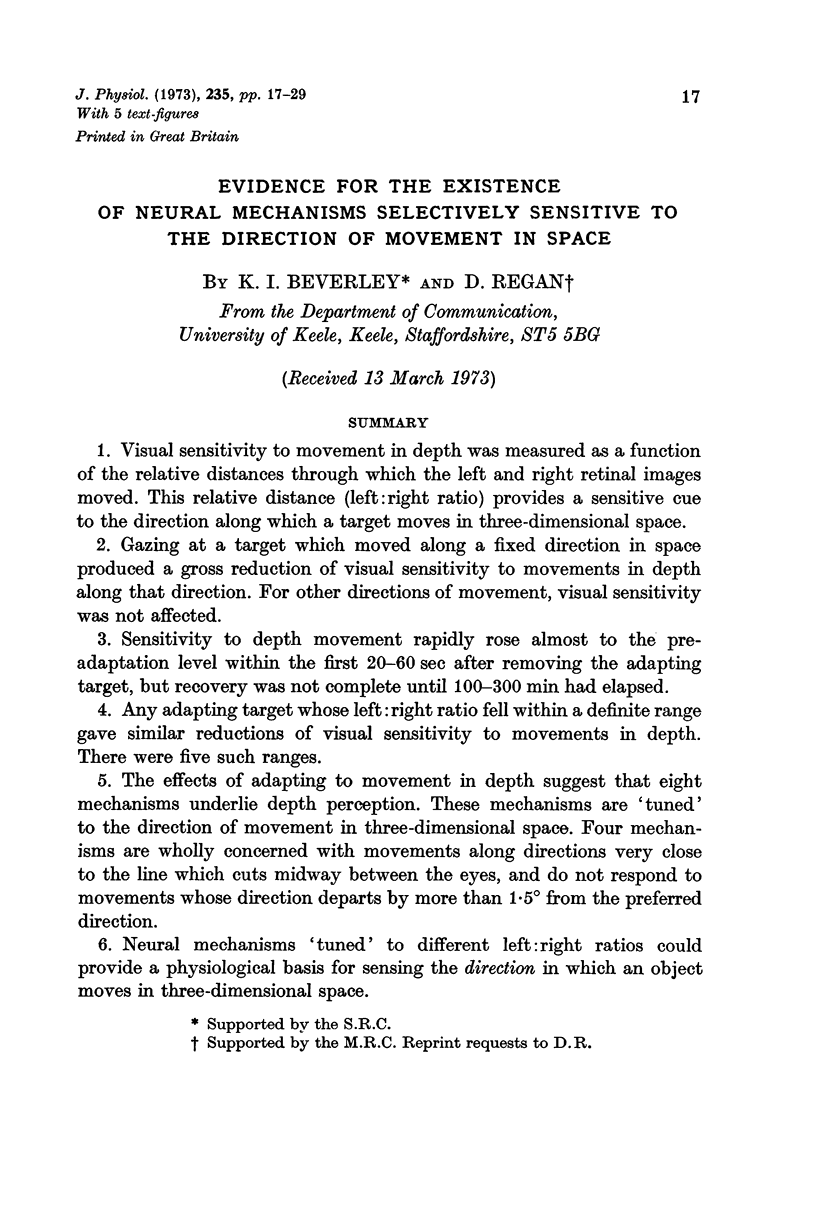
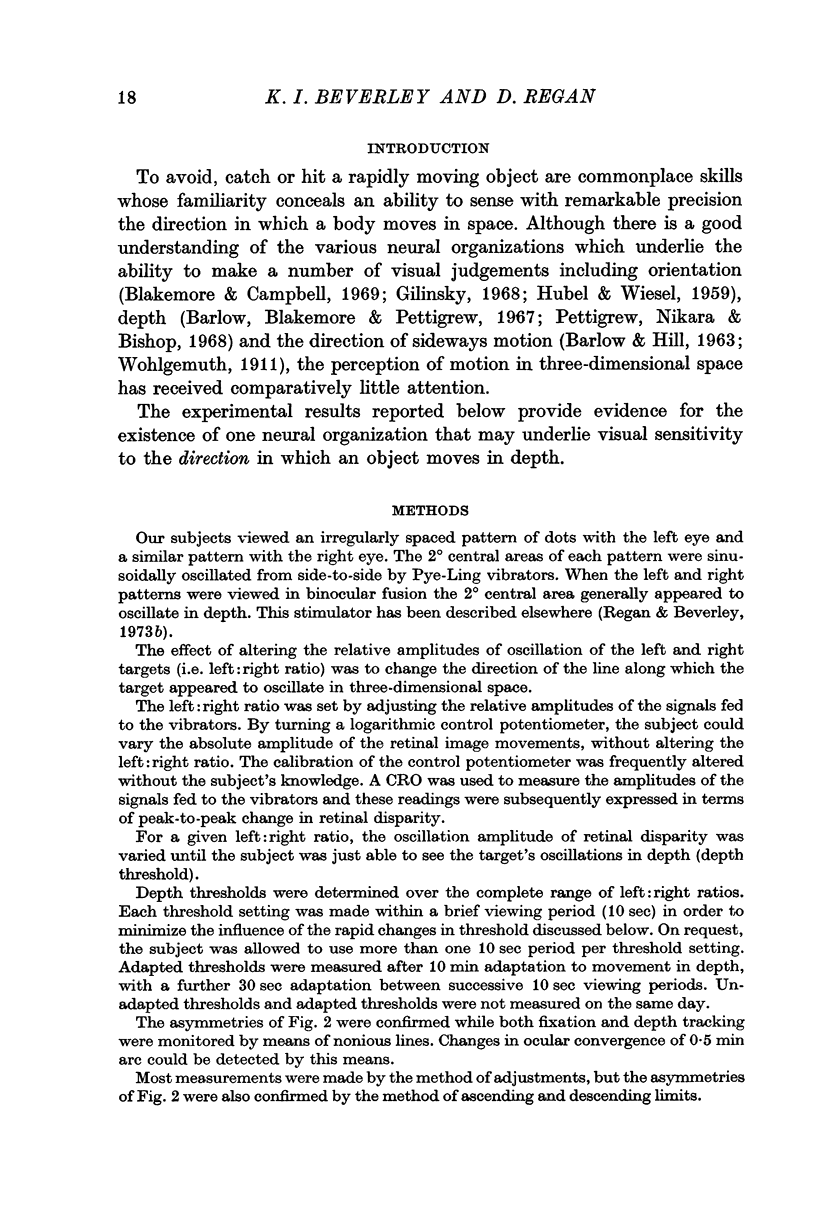

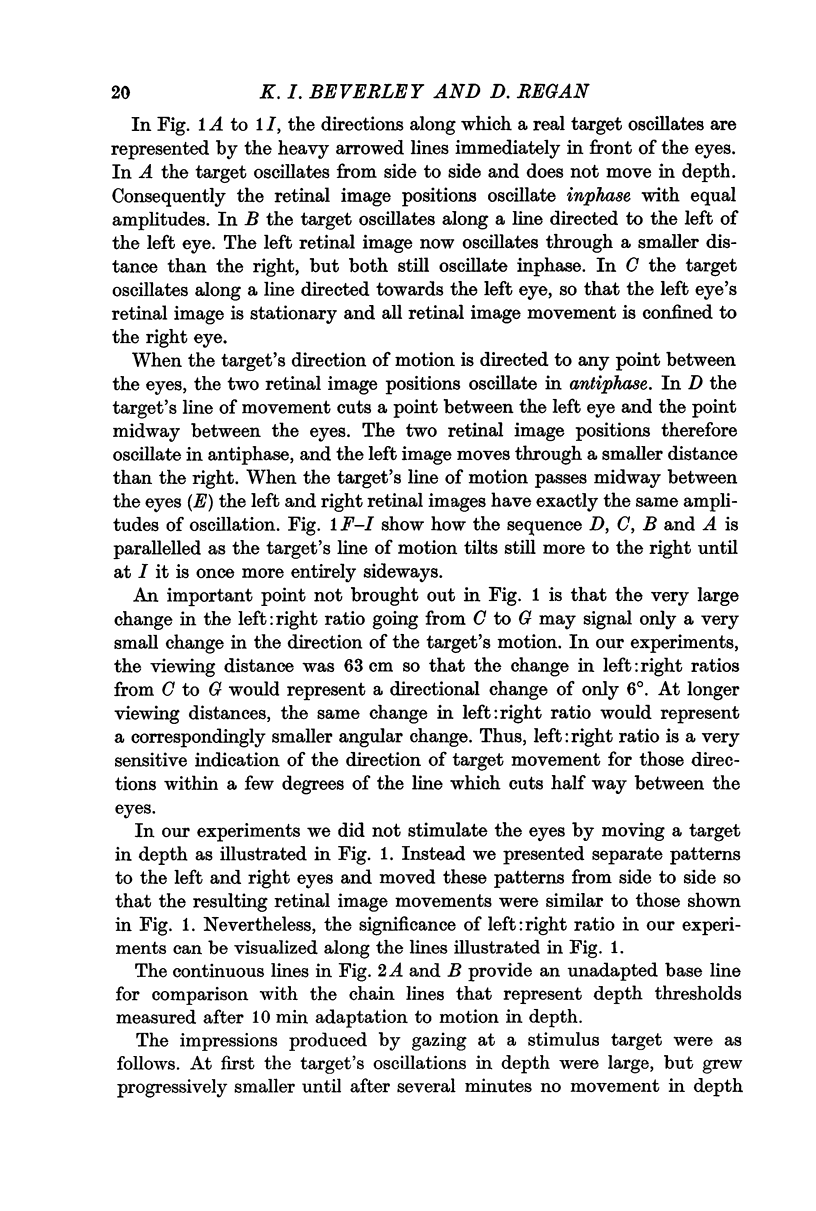
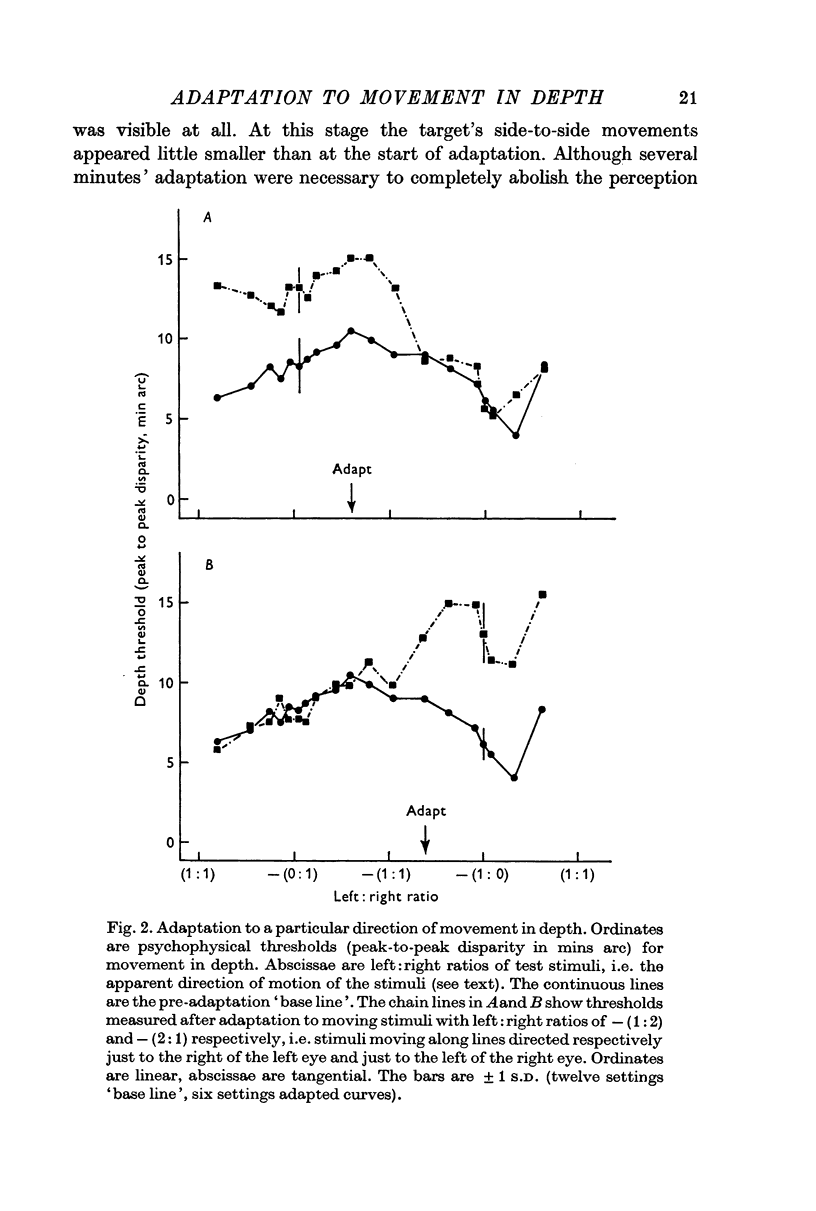
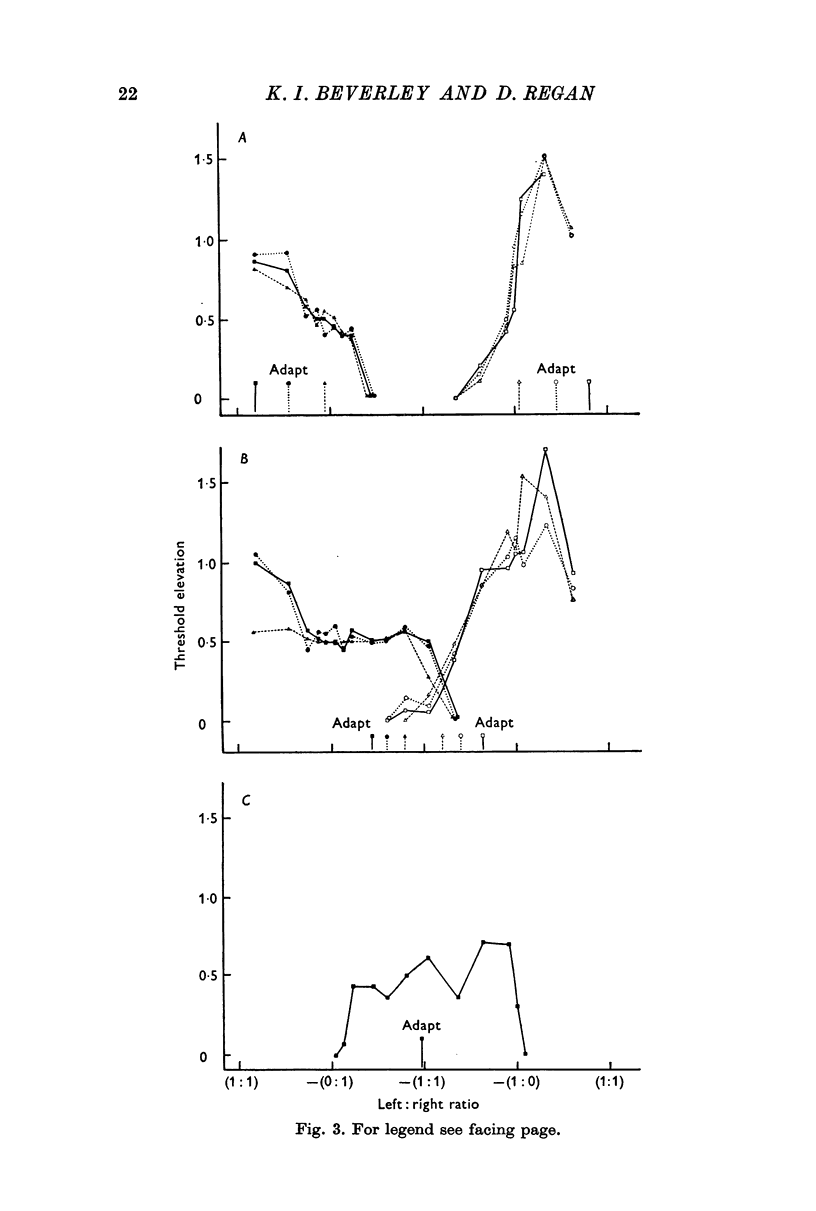
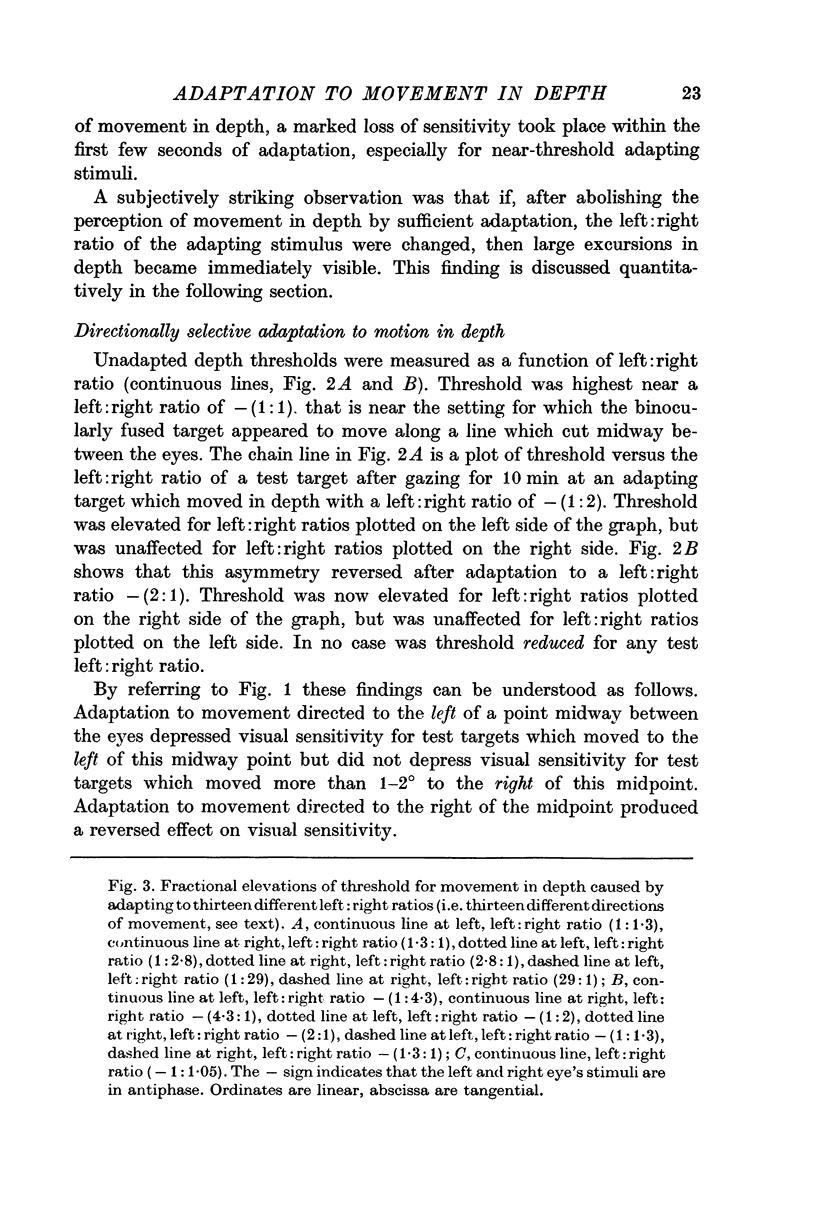
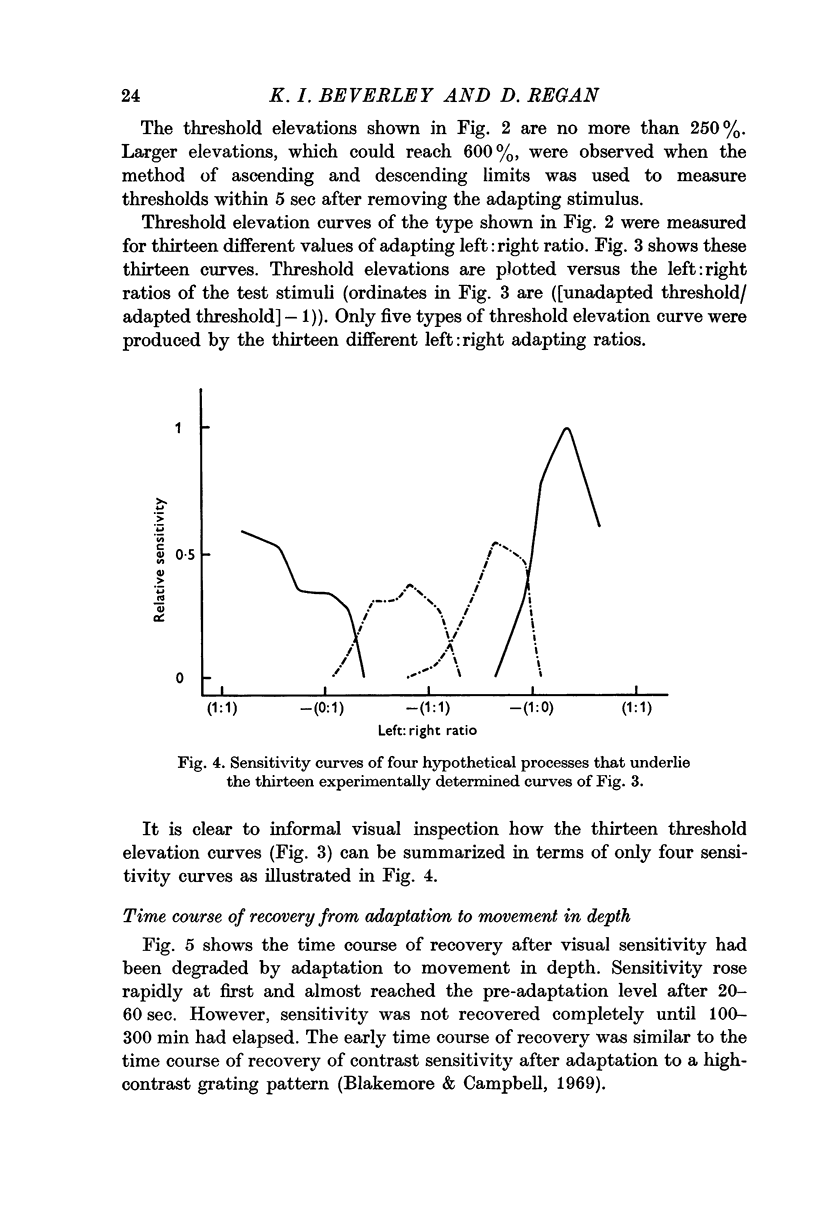
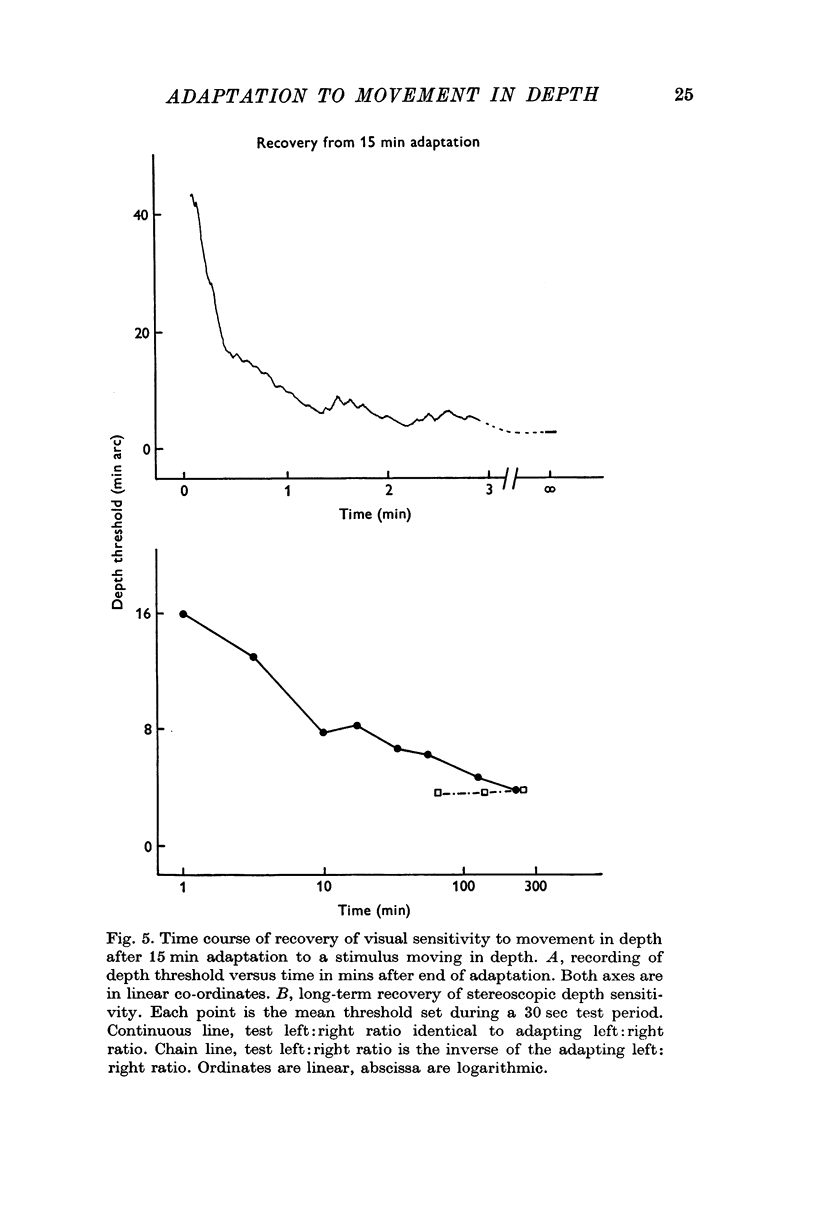
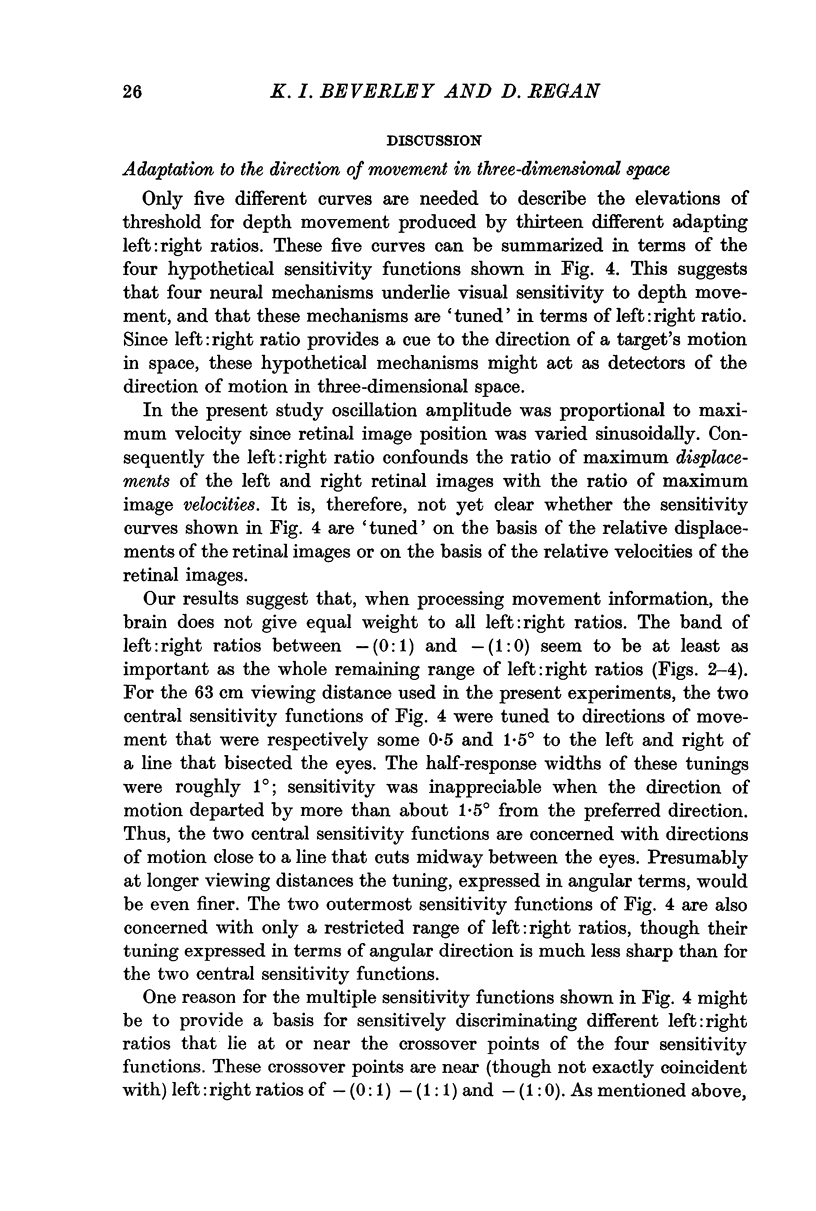
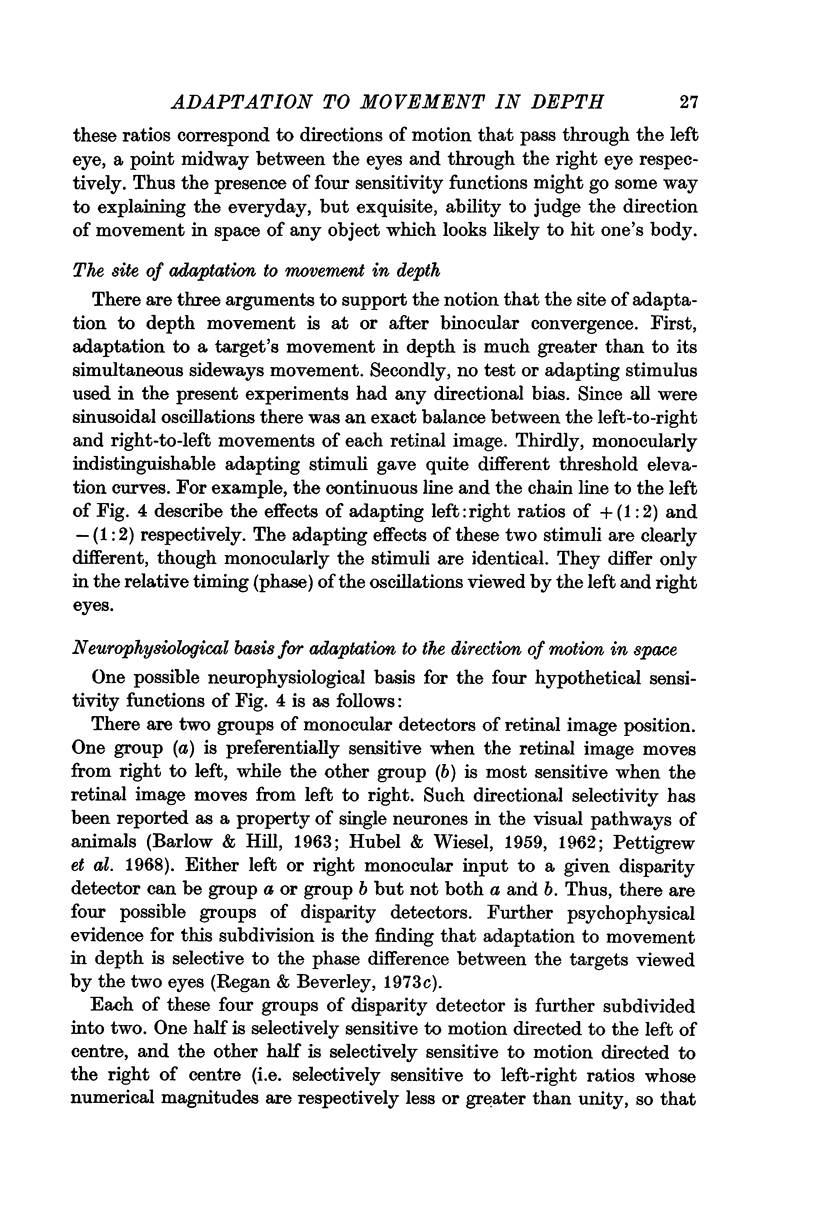
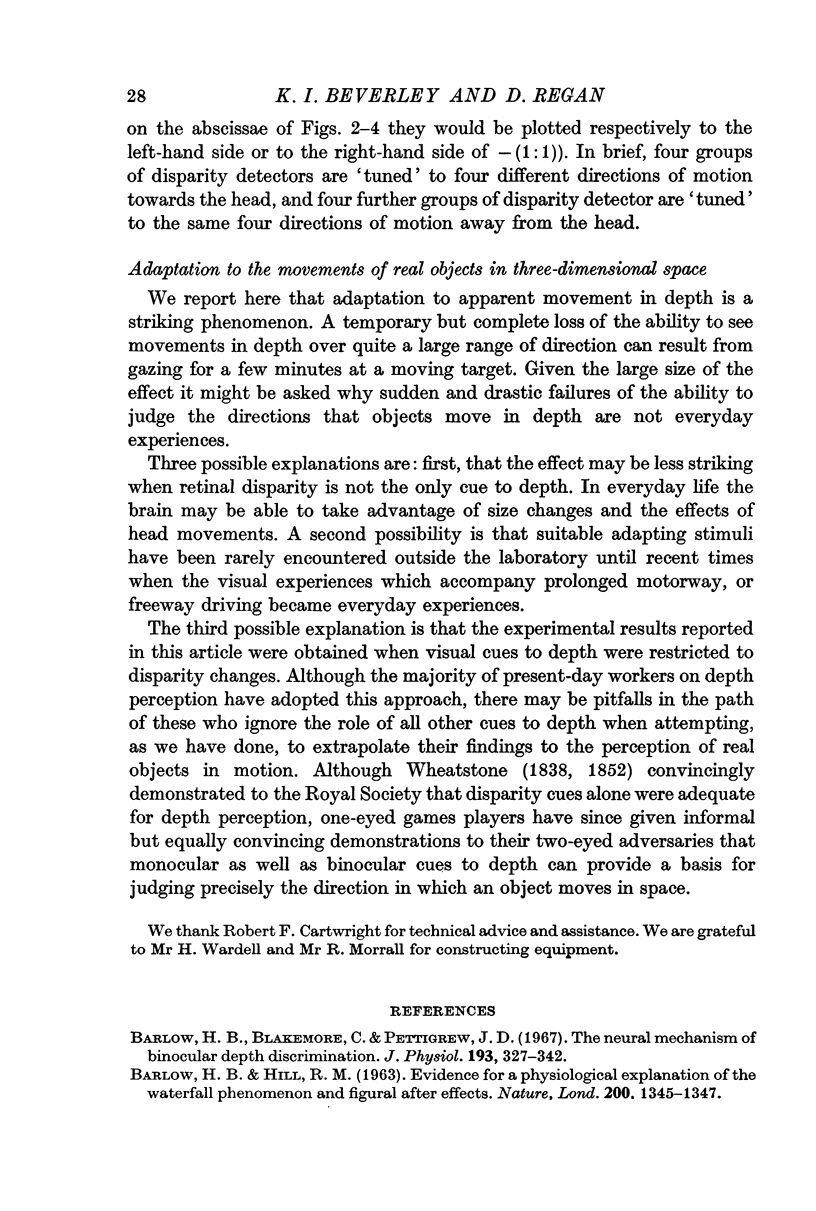
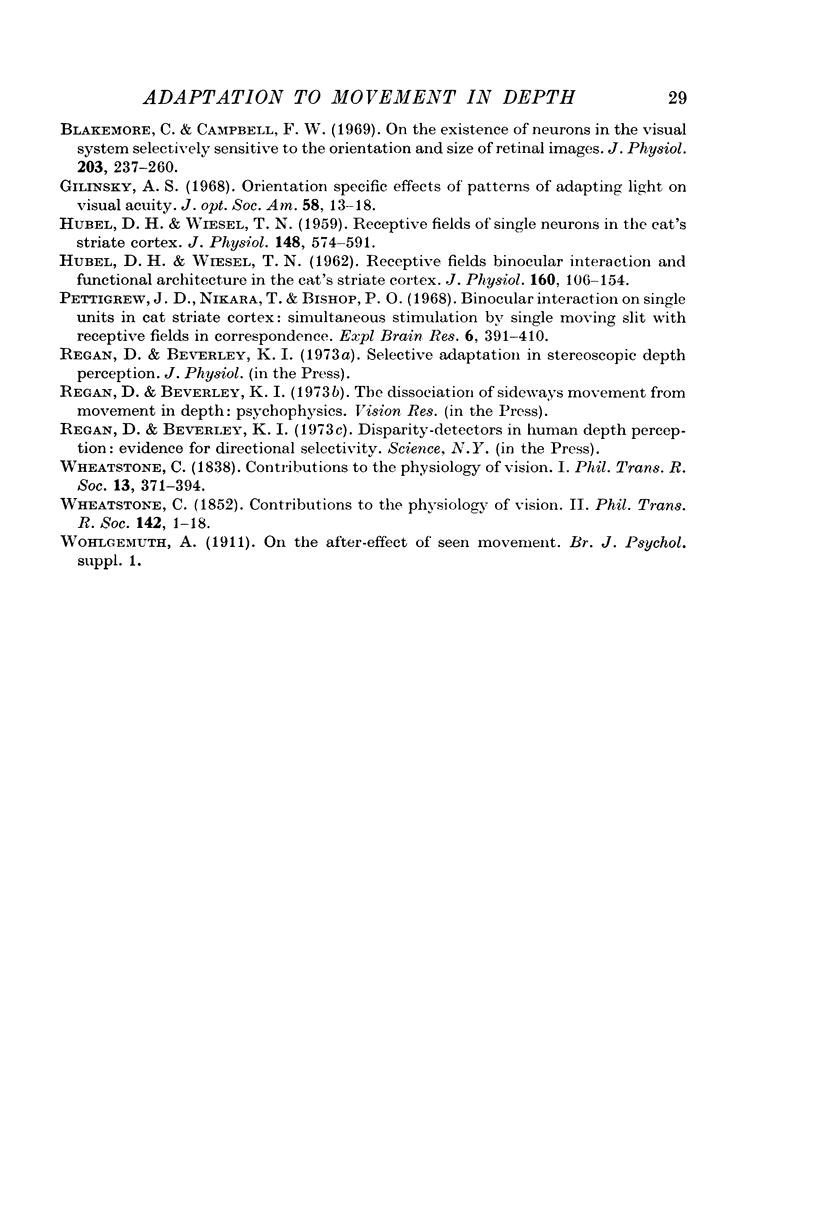
Selected References
These references are in PubMed. This may not be the complete list of references from this article.
- BARLOW H. B., HILL R. M. EVIDENCE FOR A PHYSIOLOGICAL EXPLANATION OF THE WATERFALL PHENOMENON AND FIGURAL AFTER-EFFECTS. Nature. 1963 Dec 28;200:1345–1347. doi: 10.1038/2001345a0. [DOI] [PubMed] [Google Scholar]
- Barlow H. B., Blakemore C., Pettigrew J. D. The neural mechanism of binocular depth discrimination. J Physiol. 1967 Nov;193(2):327–342. doi: 10.1113/jphysiol.1967.sp008360. [DOI] [PMC free article] [PubMed] [Google Scholar]
- Blakemore C., Campbell F. W. On the existence of neurones in the human visual system selectively sensitive to the orientation and size of retinal images. J Physiol. 1969 Jul;203(1):237–260. doi: 10.1113/jphysiol.1969.sp008862. [DOI] [PMC free article] [PubMed] [Google Scholar]
- Gilinsky A. S. Orientation-specific effects of patterns of adapting light on visual acuity. J Opt Soc Am. 1968 Jan;58(1):13–18. doi: 10.1364/josa.58.000013. [DOI] [PubMed] [Google Scholar]
- HUBEL D. H., WIESEL T. N. Receptive fields of single neurones in the cat's striate cortex. J Physiol. 1959 Oct;148:574–591. doi: 10.1113/jphysiol.1959.sp006308. [DOI] [PMC free article] [PubMed] [Google Scholar]
- HUBEL D. H., WIESEL T. N. Receptive fields, binocular interaction and functional architecture in the cat's visual cortex. J Physiol. 1962 Jan;160:106–154. doi: 10.1113/jphysiol.1962.sp006837. [DOI] [PMC free article] [PubMed] [Google Scholar]
- Pettigrew J. D., Nikara T., Bishop P. O. Binocular interaction on single units in cat striate cortex: simultaneous stimulation by single moving slit with receptive fields in correspondence. Exp Brain Res. 1968;6(4):391–410. doi: 10.1007/BF00233186. [DOI] [PubMed] [Google Scholar]


